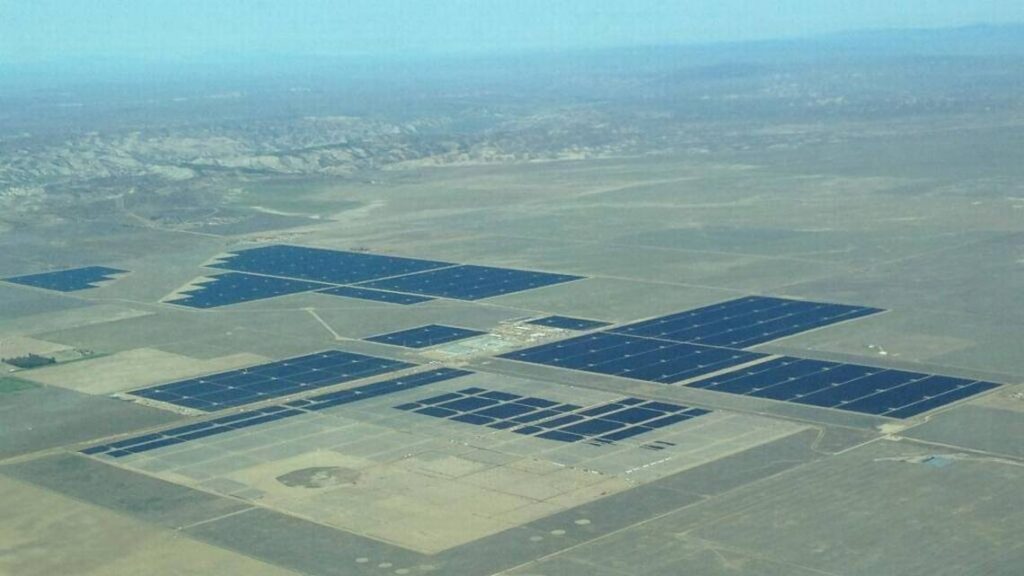
SACRAMENTO, CALIF.
California’s booming solar industry had a record day this week when the state’s largest utilities generated more power than ever from the sun.
The state’s largest power grid, the California Independent System Operator, or ISO, on Tuesday, managed enough solar energy to power 2 million homes. Its 8,030 megawatts recorded at 1:06 p.m. from solar sources stood out as double the network’s best day in 2014. It also was 2,000 megawatts more than its solar peak from last year.
“It’s a great milestone for California and the solar industry,” said Sean Gallagher, vice president for state policy at the Solar Energy Industries Association. He said California represents about half of the nation’s solar industry in megawatts produced.
That number, though impressive, does not capture the full scale of solar power in the state, such as rooftop solar panels that dot California households. It also doesn’t include solar power generated by some of the state’s smaller utilities that don’t belong to the ISO. The Sacramento Municipal Utility District, for instance, is not part of the ISO, although it can generate about 250 megawatts from solar sources, according to an agency spokesman. Altogether, the state can generate 14,000 megawatts from solar sources, according to the industries association.
The ISO reaches about 80 percent of the California energy market. It includes Pacific Gas and Electric, Southern California Edison and San Diego Gas and Electric. The utilities have been racing to meet the state’s increasingly stringent renewable fuels mandates, which require them to produce a third of their power from renewable sources by 2020 and a half by 2030.
With those goals in mind, PG&E has added over the last two years two of the largest photovoltaic solar installations in the world. The company’s Topaz Solar Farm in San Luis Obispo County, connected to the grid last year, can generate up to 300 megawatts from the sun. When it’s finished, its capacity is expected to hit 550 megawatts.
Meanwhile, PG&E’s Agua Caliente solar project in Yuma County, Ariz., brings in another 300 megawatts. It was completed in 2014. “California continues to lead the nation in adding clean resources to the system and writing a playbook for operating a low-carbon grid,” said ISO President Steve Berberich.
On Friday, the ISO managed a peak of 39,00 megawatts, with about 11,700 megawatts coming from renewable sources including wind.
550 megawattsPeak planned capacity for PG&E’s Topaz Solar Farm
To hit the next solar milestone, the ISO is advocating a proposal that would link its power grid with one managed by PacifiCorp, a Berkshire Hathaway company that serves utilities in the Western states.
Supporters say that partnership would give the California agency more outlets to manage renewable energy generated in the state, supporting the industry’s growth. “All that solar power has to go somewhere. While we’re generating solar power at noon, it could go to Las Vegas. It could go to Phoenix,” Gallagher said.
Critics, including the Sierra Club, say linking the California grid with others could lead to California customers supporting fossil fuel power plants in states that do not share California’s aggressive renewable energy mandates. The solar industry’s growth also is raising worries among some land use analysts, who say its increasing footprint may be encroaching on open spaces.
Rebecca Hernandez, an assistant professor of land and water resources at UC Davis published a study in November that showed a large portion of solar facilities moving to open spaces, such as scrub land and pastures. She encouraged the industry to look instead at already developed, urban locations. “People are watching California and using California as a model system, so we really need to set the precedent for how we use our land to produce energy,” she said. “What we do here is really emulated in the world.”
Article By: Adam Ashton
Source: http://www.charlotteobserver.stfi.re/news/nation-world/national/article89997507.html?sf=kdowydw&utm_content=36764924&utm_medium=social&utm_source=facebook#ab#storylink=cpy




